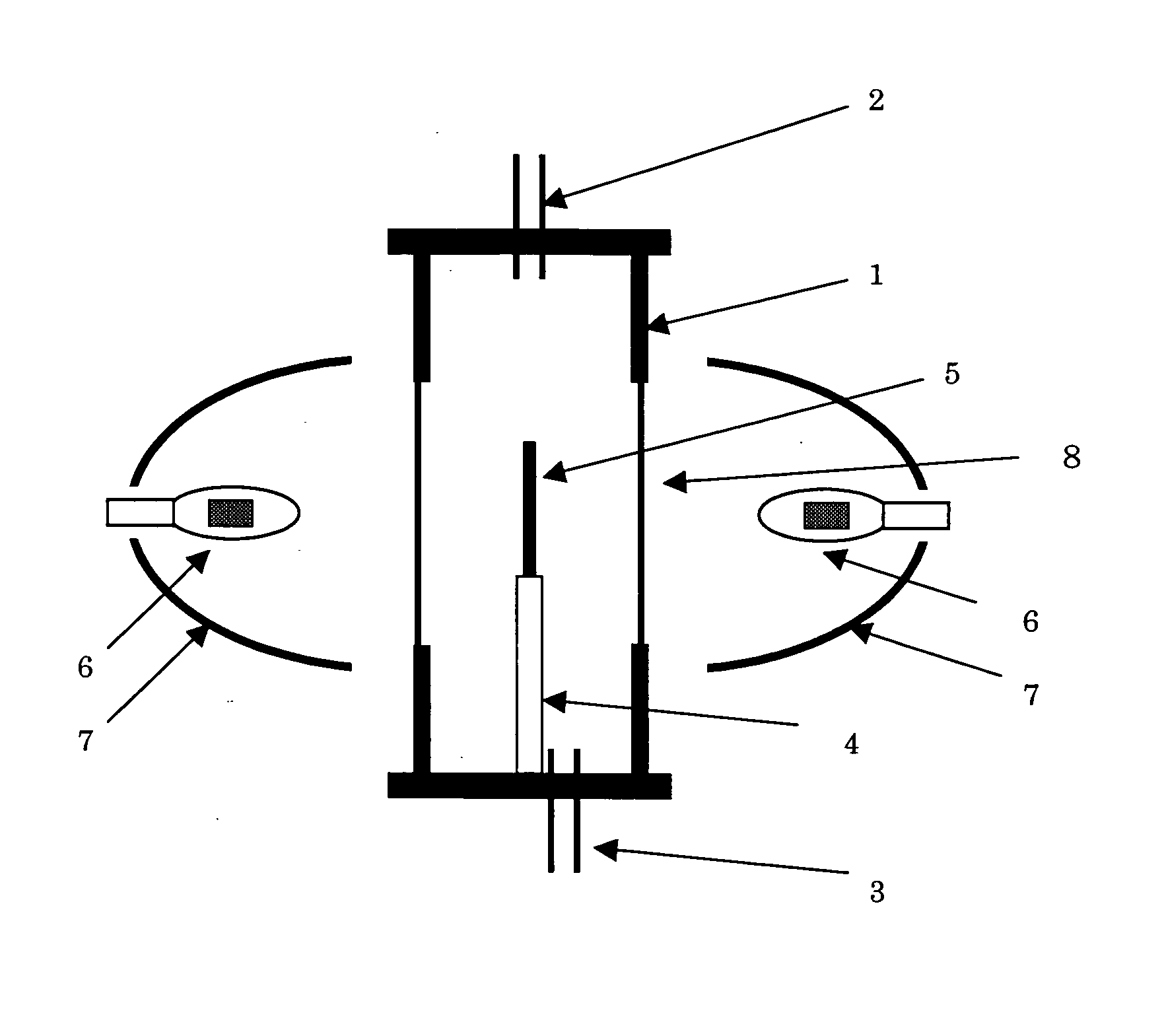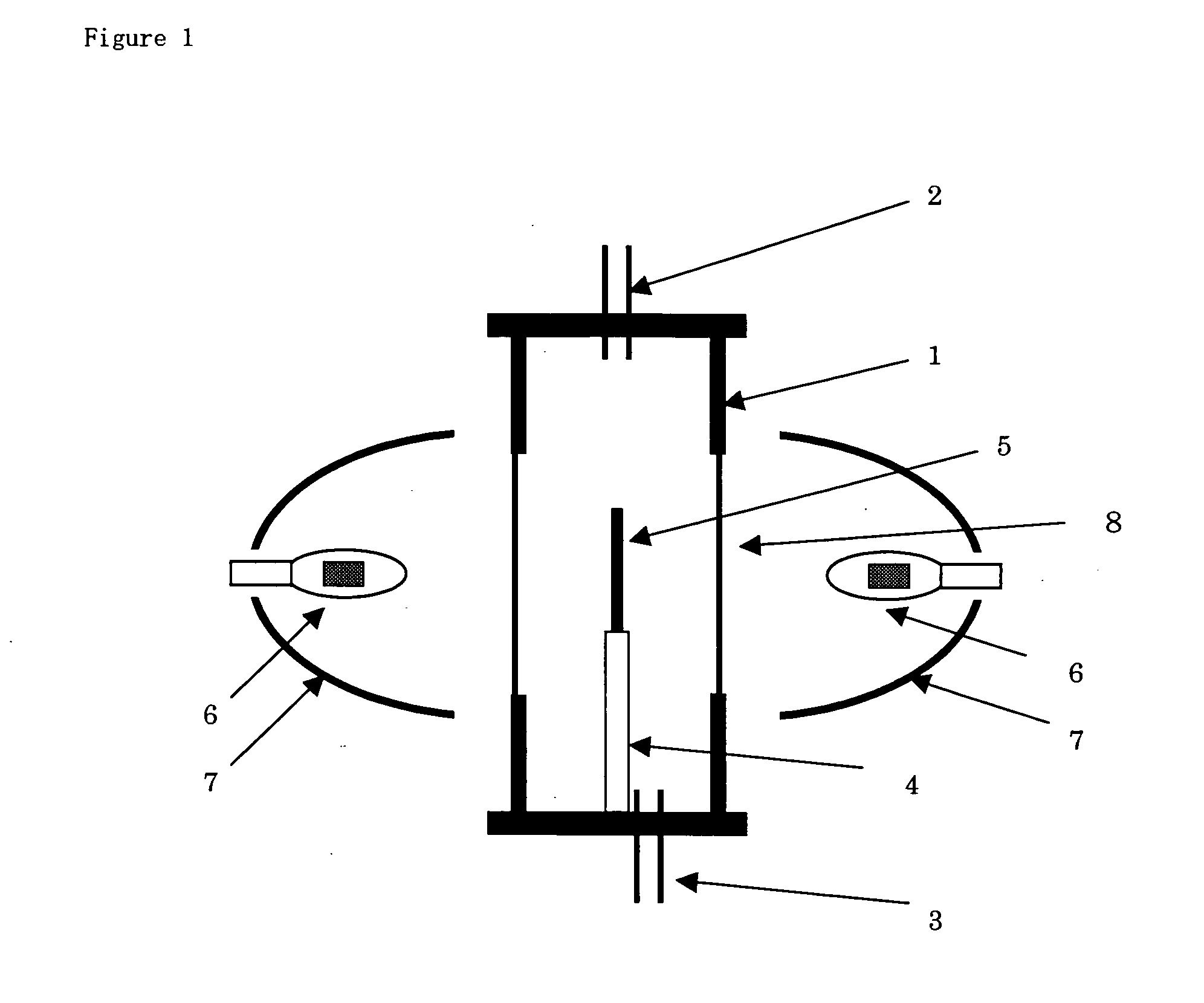Process and apparatus for producing single crystal
a technology of process and apparatus, applied in the direction of single crystal growth, electrical apparatus, chemistry apparatus and processes, etc., can solve the problems of low single crystal growth rate, disadvantageous heating of reactor per se, and inability to grow single crystals without difficulties, etc., to achieve high efficiency, easy temperature control, and uniform thickness
- Summary
- Abstract
- Description
- Claims
- Application Information
AI Technical Summary
Benefits of technology
Problems solved by technology
Method used
Image
Examples
example 1
[0089]
[0090] For example, an apparatus exemplified in FIG. 1 may be mentioned as an embodiment of a single crystal production apparatus for use in the production process of the present invention.
[0091] In this apparatus for producing a thin-film single crystal, a reactor (1), which is provided with a raw material gas introducing tube (2) and a discharge tube (3) for discharging a waste gas and has an infrared transparent window (8), is provided. A colored substrate (5) is fixed substantially vertically through a substrate holder (4) within the reactor (1). A set of infrared irradiation devices each comprised of an infrared generating source (6) and a reflecting mirror (7) are disposed outside the reactor (1).
[0092] A transparent quartz plate is used as a window material in the reactor (1), and a single crystal plate of ruby as the colored substrate (5). The infrared generating source (6) is a halogen lamp. An elliptical mirror is used in the reflecting mirror (7). When the reflect...
example 2
[0098]
[0099] An aluminum nitride single crystal was produced using the single crystal production apparatus used in Example 1.
[0100] At the outset, aluminum trichloride was filled into a separately provided thermostatic vessel. This vessel was then maintained at a constant temperature of 100 to 150° C., and hydrogen gas was passed through the vessel to introduce aluminum trichloride vapor corresponding to the temperature through the raw material gas introducing tube (2) into the reactor (1). Likewise, ammonia gas, together with hydrogen gas as carrier gas, was introduced through the raw material gas introducing tube (2) into the reactor (1). The ruby single crystal plate was heated to 1350° C. by infrared light which had been emitted from the halogen lamp and focused by the elliptical mirror, and, while maintaining the temperature of the ruby single crystal plate at that temperature, a single crystal of gallium nitride was grown on both sides of the ruby single crystal plate. As a r...
PUM
 Login to View More
Login to View More Abstract
Description
Claims
Application Information
 Login to View More
Login to View More - R&D
- Intellectual Property
- Life Sciences
- Materials
- Tech Scout
- Unparalleled Data Quality
- Higher Quality Content
- 60% Fewer Hallucinations
Browse by: Latest US Patents, China's latest patents, Technical Efficacy Thesaurus, Application Domain, Technology Topic, Popular Technical Reports.
© 2025 PatSnap. All rights reserved.Legal|Privacy policy|Modern Slavery Act Transparency Statement|Sitemap|About US| Contact US: help@patsnap.com


